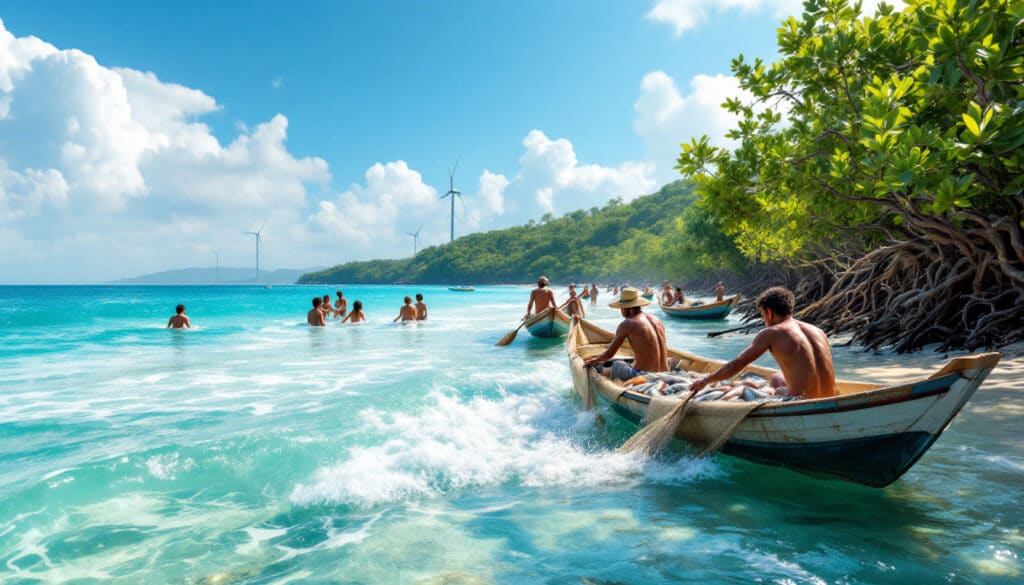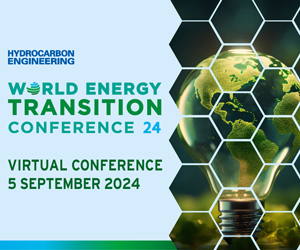Welcome to our digital world, where every click counts and every piece of data is important. Cookies and data play a crucial role in optimizing your online experience. Understanding how these elements interact is key to navigating with confidence.
We use cookies and data to offer and maintain our services, monitor disruptions, and protect against spam, fraud, and abuse. By accepting all cookies, you allow the development of new features and the customization of content according to your preferences. You also have the option to manage your privacy settings to control the use of your information. Whether you accept or reject, we are committed to respecting your online experience and providing quality service.

Table of Contents
ToggleIntroduction to Marine Energy and Its Benefits for Coastal Communities
Marine energy represents a promising renewable source, offering sustainable solutions for coastal communities. By harnessing the power of waves, tides, and currents, this form of energy contributes not only to the production of clean electricity but also to the preservation of marine ecosystems. Technological innovations in this field allow for the effective integration of marine energy into existing energy networks, while providing significant economic and environmental benefits to coastal regions.
What Types of Marine Energy Are Available Today?
Marine energy primarily comes in several types, each exploiting a different characteristic of the marine environment. Tidal energy uses the force of tides to generate electricity, while wave energy captures the energy from waves. Marine currents, on the other hand, harness the constant movements of currents to produce renewable energy. For example, researchers are currently exploring tidal energy solutions in Nags Head, demonstrating the potential of this technology in specific locations.
Additionally, ocean thermal energy takes advantage of temperature differences between water layers to generate electricity. Each type of marine energy has unique advantages, and their combination can provide a robust and flexible energy solution for coastal communities. Integrating these technologies requires significant investments, but the long-term benefits in terms of sustainability and energy independence are invaluable.
What Ecosystem Services Are Provided by Marine Energy?
Marine energy is not limited to electricity production; it also offers a range of essential ecosystem services for coastal communities. Among these services, we find the preservation of marine biodiversity, protection of coastlines against erosion, and regulation of biogeochemical cycles. The establishment of offshore wind farms or tidal plants can serve as natural barriers, reducing the impact of storms and waves on inhabited areas.
Moreover, marine energy contributes to the fight against climate change by reducing greenhouse gas emissions. By promoting the adoption of renewable energy sources, it helps maintain the balance of marine ecosystems by decreasing dependence on polluting fossil fuels. Furthermore, sustainable exploitation of marine resources ensures the conservation of natural habitats, essential for the survival of marine species and the overall health of the oceans.
How Can Marine Energy Stimulate the Local Economy?
Marine energy represents an important economic driver for coastal communities. The development of marine energy projects creates local jobs in the construction, installation, and maintenance of infrastructure. For instance, thousands of jobs in the marine energy sector in the North and Northeast are threatened without major investment, as highlighted by a recent alert.
Furthermore, investment in marine energy attracts private and public capital, thereby stimulating the local economy. Local businesses benefit from new commercial opportunities and can develop partnerships with international players in the sector. Additionally, revenues generated from the sale of renewable electricity can finance community projects and sustainable development initiatives, thus strengthening the economic resilience of coastal regions.
What Are the Challenges and Opportunities of Integrating Marine Energy?
Integrating marine energy into existing energy networks presents several challenges, particularly the high costs of infrastructure and the need for advanced technologies to effectively capture marine energy. However, these challenges are offset by significant opportunities. Technological advancements facilitate the optimization of energy conversion systems, making marine energy more competitive with other renewable sources.
Moreover, government policies and financial incentives play a crucial role in encouraging investments in this sector. Market studies show that the tidal and wave energy market is ready for rapid expansion, offering attractive growth prospects for investors and entrepreneurs. Additionally, collaboration between scientists, engineers, and local communities fosters innovation and ensures responsible exploitation of marine resources.
What Are the Environmental Impacts of Marine Energy?
Marine energy is generally considered a clean energy source, but it can have environmental impacts that must be evaluated and managed. The installation and operation of marine infrastructure can disrupt natural habitats and marine species. For example, tidal turbines can affect local currents and water quality, while offshore wind farms may influence the migratory paths of birds and marine mammals.
Nevertheless, studies show that environmental impacts can be minimized through responsible design and management practices. The use of sustainable materials, careful site planning, and constant monitoring of marine ecosystems can help reduce potential negative effects. Furthermore, the adoption of less invasive and more wildlife-friendly technologies contributes to harmonizing the development of renewable energy with the conservation of natural habitats.
How Can Coastal Communities Benefit from Marine Energy?
Coastal communities can reap numerous benefits from adopting marine energy. First, access to a renewable and local energy source enhances their energy independence, reducing dependence on energy imports and increasing resilience to fluctuations in fossil fuel prices. Additionally, revenues generated by energy projects can be reinvested in local infrastructure, such as schools, hospitals, and public facilities.
Moreover, marine energy stimulates local job creation and boosts the regional economy. Training and skill development programs enable residents to acquire the qualifications necessary to work in this growing sector. Furthermore, marine energy projects can strengthen community ties and promote collaboration among residents, businesses, and local authorities to achieve common sustainability and prosperity goals.
What Are Successful Examples of Marine Energy Projects?
Several marine energy projects have demonstrated their success and viability, serving as models for other similar initiatives. For instance, the revolution of marine energy has facilitated the development of tidal and wave plants in various coastal regions, providing stable and predictable energy production. These projects have not only contributed to reducing carbon emissions but have also generated substantial economic returns for local communities.
Another notable example is the initiative to explore the energy future through innovative technologies, such as hybrid systems combining different marine energy sources. These projects integrate smart solutions to optimize energy production and minimize environmental impacts, illustrating the potential of marine energy to transform our approach to energy production.
What Are the Environmental Benefits of Marine Energy?
Marine energy offers numerous environmental benefits that make it an attractive option for the energy transition. First and foremost, it produces clean, renewable energy, thereby reducing greenhouse gas emissions and contributing to the fight against climate change. Unlike fossil fuels, marine energy does not emit atmospheric pollutants, which improves air quality and public health.
Furthermore, marine energy promotes the preservation of natural resources by harnessing inexhaustible energy sources such as waves and tides. It also allows for diversifying the energy mix, thus increasing the energy security of coastal regions. By integrating marine energy into their sustainable development strategies, coastal communities can not only protect their local environment but also contribute to a global effort of ocean and marine ecosystem conservation.
How Do Public Policies Support Marine Energy?
Public policies play a decisive role in the development and adoption of marine energy. Governments establish regulatory frameworks and financial incentives to encourage investments in this sector. These measures include subsidies, tax credits, and guaranteed feed-in tariffs for electricity produced from renewable marine sources. For example, initiatives like those described in renewable marine energies facilitate project financing and stimulate technological innovation.
Furthermore, public policies promote research and development by subsidizing studies and pilot tests, thereby allowing for the optimization of existing technologies and the development of new ones. International cooperation and resource and knowledge sharing also strengthen the effectiveness of policies aimed at promoting marine energy. By actively supporting this sector, governments contribute to the transition toward a greener and more resilient economy, beneficial for coastal communities and the global environment.
What Are the Key Tools and Technologies to Maximize Marine Energy Efficiency?
Optimizing marine energy relies on the use of advanced technologies and innovative tools. Forecasting and monitoring systems allow for a better understanding of marine dynamics and optimization of energy production based on environmental conditions. For example, smart sensors and Internet of Things (IoT) devices collect real-time data on wave movements, tides, and currents, thus facilitating more efficient management of energy resources.
Additionally, modeling and simulation software plays a crucial role in the design and optimization of marine infrastructure. They allow for testing different configurations and predicting system performance before installation, thereby reducing costs and risks associated with energy projects. Integrating artificial intelligence and machine learning into these tools offers advanced predictive analytics capabilities, enhancing the accuracy of forecasts and the overall efficiency of marine energy operations.
What Are the Social Benefits of Marine Energy for Local Communities?
Marine energy brings significant social benefits to local communities, going beyond economic and environmental aspects. The creation of stable and well-paying jobs in the marine energy sector helps strengthen the social fabric of coastal regions. These jobs include positions in construction, operation, maintenance of facilities, as well as in research and technological development.
Moreover, marine energy projects support access to affordable and reliable energy, thus improving the quality of life for local residents. Electrification of public infrastructure, such as schools and hospitals, through marine energy contributes to sustainable community development. Additionally, resident participation in energy projects fosters a sense of ownership and involvement, encouraging more inclusive and democratic local governance. These social benefits are essential to ensure the sustainability and acceptance of marine energy projects within coastal communities.









